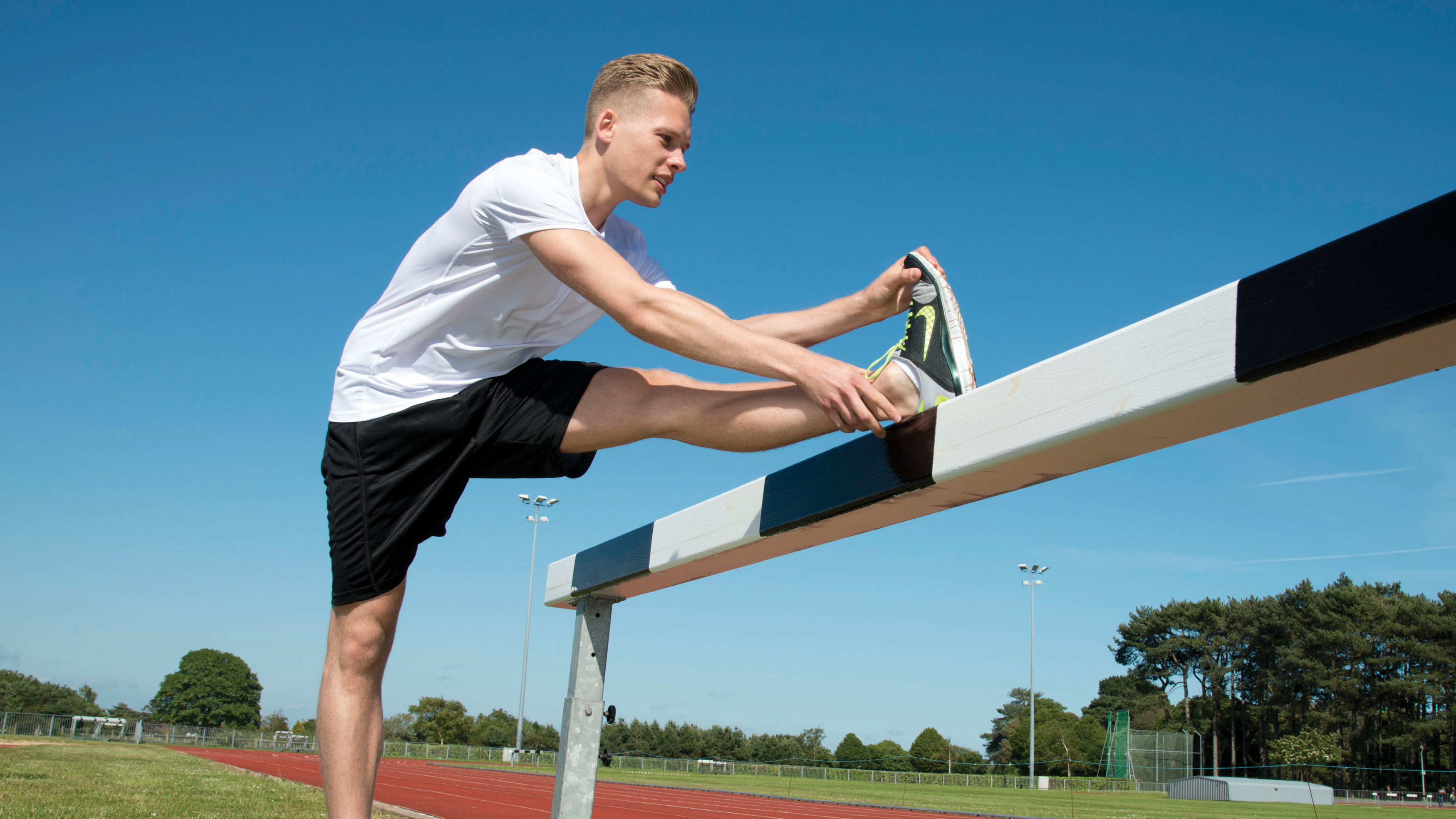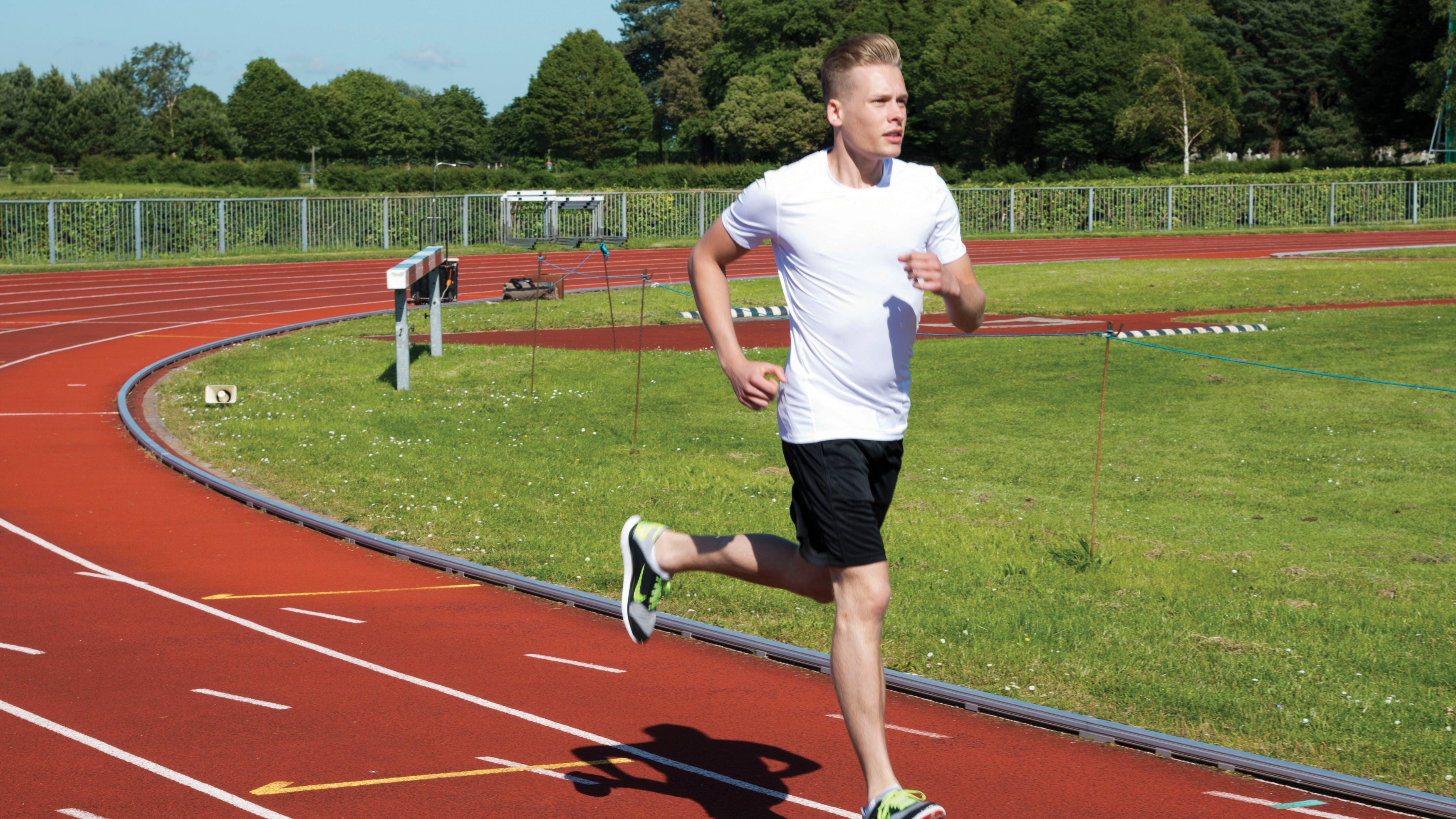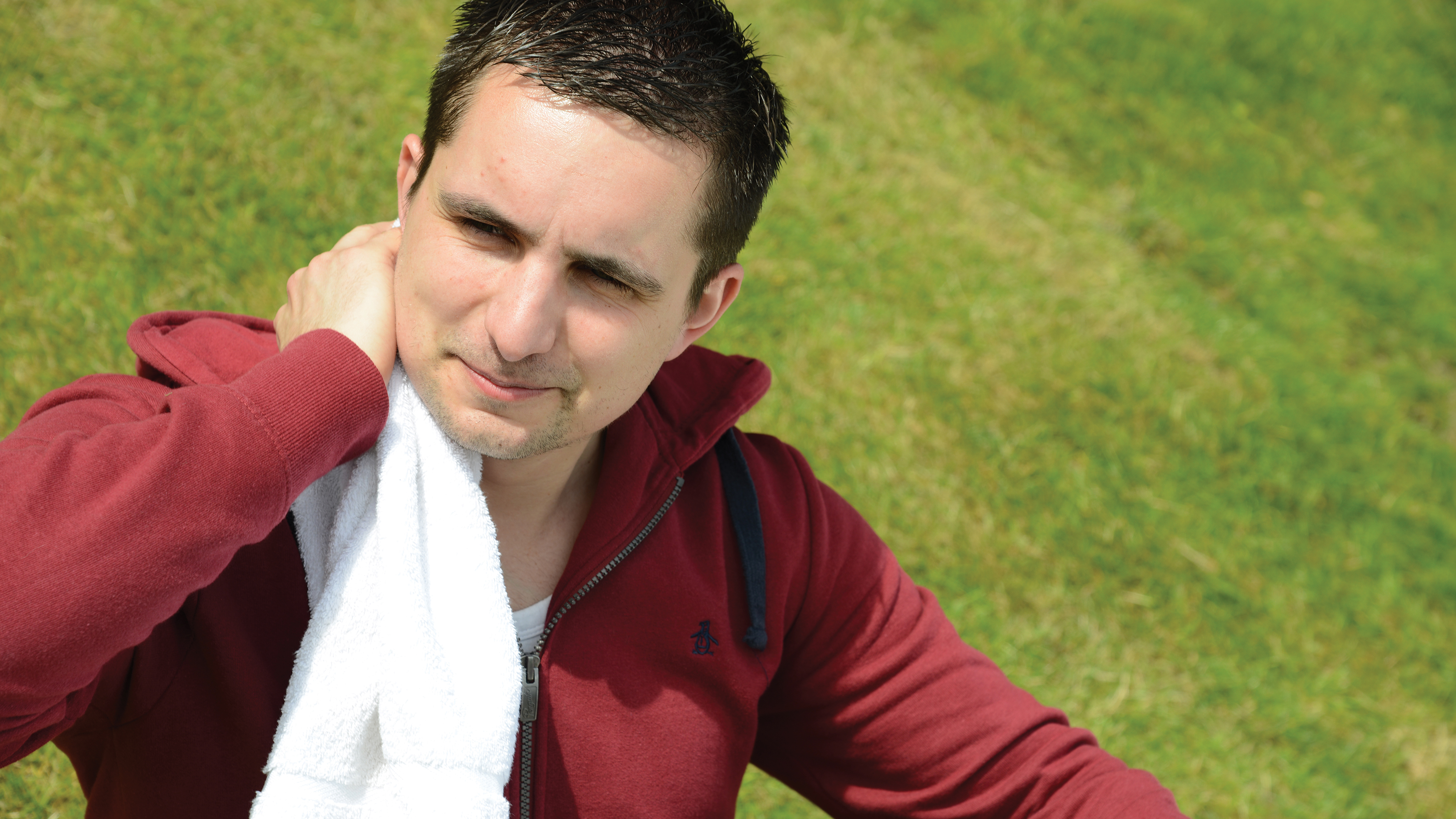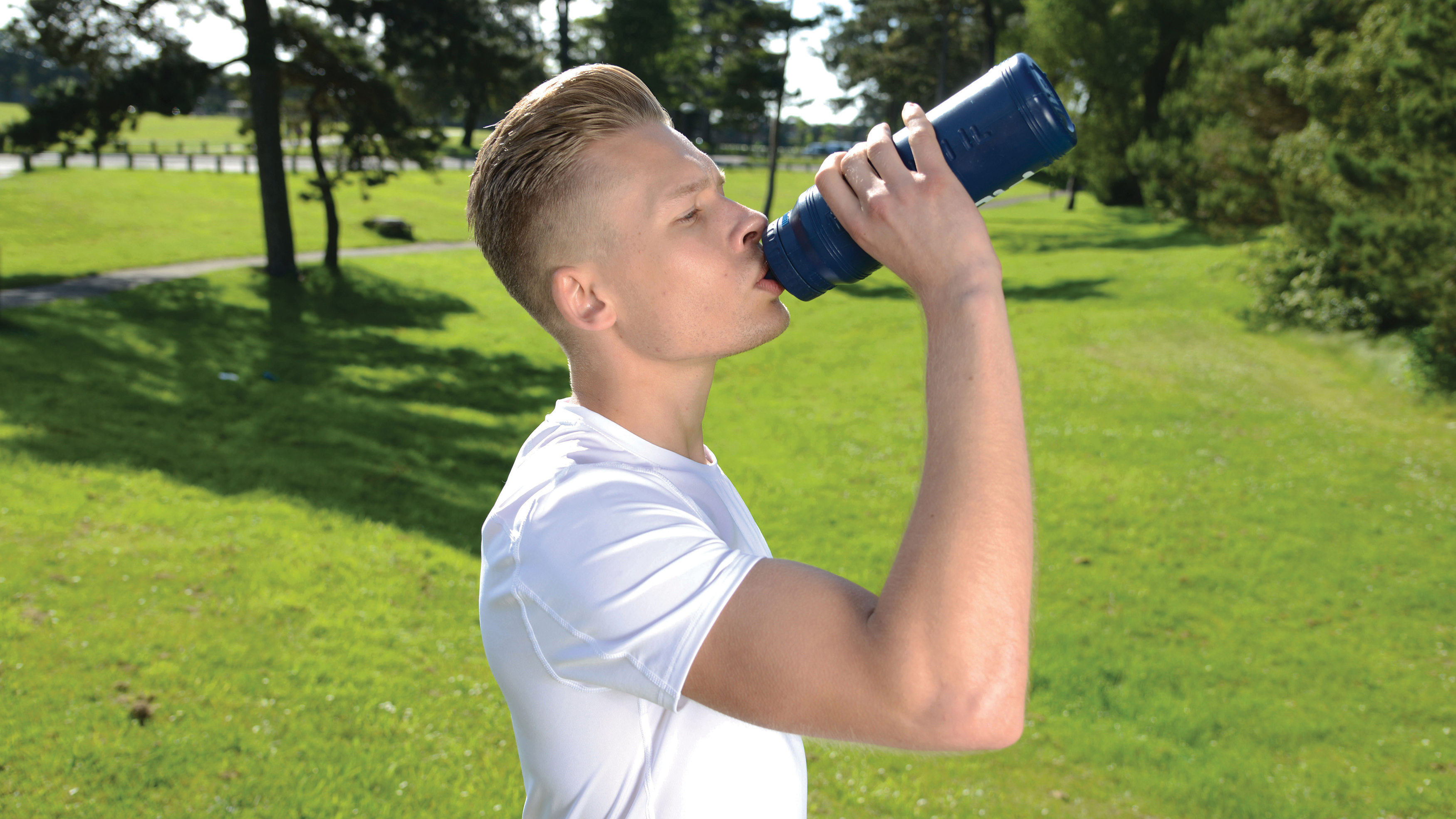15 running tips for men: Hints, tricks and benefits for getting the most out of your run
Looking to start running? Hit the road with these 15 running tips for men of every age

These running tips for men should help you address the most common queries and issues, so you can get on with the simple act of running. Male runners have just as much to contend with as female runners, and some very gender-specific problems and concerns.
1. Limit competitiveness
Men can be competitive, with themselves and in peer groups. We’ve probably all met that person who claims that they could just turn up and run a half marathon without training. Gaining running strength means consistency, and a slow, steady build up. It’s the best way to get stronger and stay uninjured. Focus on yourself and your training, and you will be reaping the rewards soon enough.
2. Unintended weight loss
When you start running, you might find that you begin to lose weight and that isn’t always desirable. If you find that the scales are on a downward spiral, then you need to review your nutrition plan, and look at cross-training to maintain muscles that running doesn’t use. Weight training can be useful for keeping bulk.
3. Intended weight loss
Of course, losing weight might be exactly what you are trying to do, and running is a great way to do this. If you are starting running overweight, then you need to make sure that you have supportive shoes, that you start slowly and you keep an eye out for injuries – your body will be under a lot of pressure at first, but it gets easier as you start to shed fat.

4. Weight training
You don’t have to give up weight training to run. In fact, it can benefit your running by building leg strength, giving you a powerful core and maintaining a strong upper body. It’s better to do weight training and running on different days, or you will be doing one with a tired body, meaning that you might lose good form or not be able to perform to your best.
5. Don’t give up other sports
If you already do other sports, such as football or squash, build them into your running program rather than neglect them or try to do too much. These involve running anyway, usually in short, fast bursts, therefore use your running sessions to focus more on a slower pace and a longer distance to balance things out.
6. Beware of injuries
Different sports come with different injuries, but they can all affect your running. If you turn an ankle at football, or pull a muscle lifting weights, you should rest from running while you heal, until it is completely pain free to walk. At that point you can start slowly building back up to where you left off and reintroduce each activity as you regain fitness.
Start your week with achievable workout ideas, health tips and wellbeing advice in your inbox.
7. Chafing
It’s not nice, but one problem that is very much a ‘male’ problem is sore nipples. While women have sports bras as protection, it’s a different situation for men, as this sensitive area rubs against t-shirts and can cause painful chafing or even bleeding. Prepare for this by using petroleum jelly, and you can get specially designed plasters to cover the area (usually called nipple guards or something similar).

8. Go tight
Women suffer less from chafing in sensitive areas, such as the thighs, because they are more likely to wear skintight leggings so that skin doesn’t meet skin. Don’t be afraid to do the same; you can get tight cycling shorts style bottoms with normal, looser-fit shorts over the top for the best of both worlds. Use petroleum jelly in any areas that rub.
9. Supportive underwear
When you’re running, you want everything to be held in place. Some shorts have an inner ‘pant’ area so you could go ‘commando’, but you might not find this supportive enough. You can get away with well-fitted boxers, but cotton isn’t the best choice of material as it doesn’t wick sweat away. Proper sports underwear is both supportive and stays dry.
10. Stay hydrated
It’s easy to forget to drink enough water when running, especially if you’re not one of those people who downs their eight glasses a day as standard. Men need more water than women in general, so keep an eye on your urine to ensure you are getting enough (a pale straw colour is perfect) and keep drinking throughout the day.

11. Don’t be stubborn
Are you the type to ignore aches, pains and niggles? Do you shrug them off and carry on as normal? This is just asking for long-term problems. That tiny niggle in your ankle could lead to serious injury and months off running. Running through aches can ensure it stays with you for longer. Be honest about your symptoms and appropriate measures to rest and recover.
12. ‘Weekend warrior’?
The term ‘weekend warrior’ refers to those who work hard in the week and try and cram everything in during the weekend. You might have time to fit in two runs, a game of football, a round of tennis and a hike, but you are more likely to get injured as a result. If you can only train at weekends, then it’s better to take longer to reach your goals than do too much in one go.
13. Blood in urine
If you come back from a run and see blood in your urine, don’t immediately panic. It could be hematuria, which is when red blood cells leak into urine following intense exercise and/or dehydration. See a doctor to eliminate any other causes, but you should be sure to hydrate properly and work at the right pace for your fitness level.

14. Watch your diet
If your diet isn’t that great, or you pay little attention to what you eat, especially on the go, then it’s worth thinking more about the nutrition you’re getting to fuel your running session. Make sure you get a good balance of carbs, proteins, leans meats and fats, add in plenty of fruit and vegetables, and limit processed food and alcohol.
15. Foot hygiene
Look after your feet, as you need them! The health and hygiene of your feet is essential to everyone, but especially to runners. Infections, like athlete’s foot, can thrive in moist, sweaty socks and trainers. When you finish running, take your socks and shoes off immediately rather than lounging around in them. Wash your feet and let them air dry for a little while. Dry out your trainers before you next wear them and grab a fresh pair of socks every time you run.
Launched in 2020, Fit&Well.com is all about helping you meet your health and fitness goals in ways that are fun and achievable. With news and features on fitness, weight loss, running, nutrition, yoga, wellness and more, we're committed to helping you wherever you are on your fitness journey. We break down the best fitness tech, with reviews, buying guides and the latest deals on fitness and wellness kit, from dumbbells to diffusers.
We cater for all difficulty levels here. It doesn't matter if you're a beginner in the world of fitness or you're gearing up for your tenth marathon: we're all moving towards the same goal – creating a healthier, happier you. From guides on getting started doing walks around the block, to creating the perfect work-from-home space, to eating to fuel your first triathlon. It's all here.

